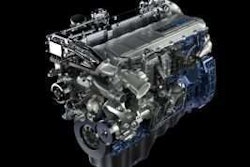A profitable parts department should be a priority no matter what is happening with new vehicle sales. And in times of slumping vehicle sales, it can be what keeps your dealership afloat. Therefore, it is critical that you make sure it operates at peak efficiency.
One of the ways to accomplish this is to pay attention to details while leveraging technology.
Managing Inventory
The benefits of vendor-managed inventory (VMI) have been touted for a number of years, but it still is not being used by all dealers. And even dealers who are using it may not be reaping its full value.
According to Keith Ely, managing partner, KEA Advisors, “It is vital that the parts department makes sure that on-hand counts are correct, lost sales are recorded, bin counts performed and all inventory checked to keep an accurate, perpetual inventory rather than just doing a physical inventory once a year.”
He added, “These things become even more vital as you move into VMI.” Stocking levels and parts orders are determined by the VMI system based on the information provided. If inaccurate or incomplete data is given, the system’s benefits will not fully be realized.
In addition, Ely believes that the manufacturers are trying to move toward a just-in-time inventory process for their dealers, but that there are issues with moving information up and down the entire supply chain.
“Some manufacturers are trying to move to a Wal-Mart-type of inventory system for their dealers where basically when a part is sold off the shelf, another one appears the next day,” Ely says.
“Manufacturers have the ability to do that, but the dealers’ systems of getting accurate and timely information back to the manufacturers and up and down the supply chain from the manufacturer to their suppliers is the biggest challenge.”
Part of the problem is that for this type of system to work dealers need to capture demand data including what is sold and what isn’t sold, but is in demand. “The classic lost sales information and other data needs to be recorded consistently and accurately,” he says.
“There is a huge misconception about how to record demand data. When you start looking at VMI programs, some of them heavily discount the system’s ability to track and generate lost sales because of the inability of many dealers to record accurate lost sales data.” This, in turn, impacts the ability of the vendor to manage inventory correctly for the dealer.
Measuring Performance
Dealers need to be aware of several important performance indicators regarding inventory turns. The first is gross inventory turns. Gross turns equals the annualized cost of parts sales divided by the total parts inventory. Ely advises dealers to shoot for 8+ gross turns. “We have a client who is at 8.6 turns year to date, with a high of 9.95 turns one month.”
The flaw with gross parts turns is that it does not tell you how much you are selling from your inventory.
True turns is another key number. True turns measures what sales are coming out of your existing stock. “That probably is a more accurate, better calculation,” he says, “because it gives you a better feel for how often your inventory is flowing through sales out of your existing stock,” he explains.
True turns equals the (annualized) cost of parts sales, minus emergency purchases and customer orders, divided by parts inventory. “Our guideline is 6+, but we have a client that is at 7.1 true turns,” Ely explains.
He adds that dealers who have embraced all the technology and put proper tracking processes in place have seen dramatic improvements in their true turn rates.
Fill rate also is critical because it tells you the sales that come from your inventory vs. all the requested parts. The fill rate equals the cost of parts sales, minus emergency purchases and customer orders, divided by the cost of sales plus lost sales. Ely’s guideline is 90 percent or more.
“If you have a request for a part 100 times and you can go to the shelf and pull it without having to order it 85 times than you have a fill rate of 85 percent,” he explains.
A Balancing Act
Managing inventory properly is not the only challenge the parts department faces. Balancing the needs of external customers with those of the internal customer (the service department) can be quite an undertaking.
“From my standpoint, the first responsibility of any parts department is to service the service department because of the gross margins that can be produced in the shop,” Ely says.
Typically, the parts department is going to see a 32 percent to 34 percent margin, while the service department technicians can generate upwards of 75 percent gross margin, according to Ely. “And every time you are selling labor you probably also are selling parts along with it.”
He explains that the main causes of inefficient technicians are either the parts department’s inability to fill orders off the shelves, or a communication disconnect between the parts department and the service department that impedes the orderly flow of information.
If there is proper communication between the service writer and the back counter, a lot of planning as to when parts actually are needed for a repair can take place.
For example, the service writer can determine when the repair will be at a certain stage and then the parts department can make sure the necessary parts are available when needed. This can help eliminate the need for emergency parts orders.
However, the dealer can’t take his eyes off the outside customer either. “It’s important to understand the needs of both internal and external customers,” Ely says.
But he added that you need to determine if a customer needs a part immediately because he has a truck down situation, or if it is a part that he doesn’t need for a day or two.
If it is a body shop customer who is just starting to tear the truck down, he may not need a particular part for a week or more.
“I have a client who sells 20 to 30 hoods a year and according to the classic 3-in-12 criteria the dealer should have hoods as stocked parts. But everyone knows there is no reason to stock a hood because if you manage things properly, you will have time to order the part when the customer actually needs it,” he says.
“You might want to stock one or two, but you probably do not need to stock four or five.”
Technology’s Role
VMI has allowed dealers to move beyond being concerned with the movement of parts into things like pricing strategies. Dealers can establish price points for parts like wheels seals and filters-things that are very competitive in their market-while setting different price points for proprietary parts, which allow them higher margins.
Remote control of customers’ inventory-moving managed inventory down the chain-is enabled by technology.
Internet parts sales also are growing. This can either be something as simple as taking requests over the Internet from someone saying they need a water pump, to someone entering the part number and actually ordering the part.
“I think the more technologically savvy you are, the better job you are going to do running the parts department efficiently,” Ely says.
That being said, he adds, “The whole success of the parts department goes back to the ability of the parts manager and his staff to manage the inventory so that it turns quickly and so that the fill rate is high. These are basic blocking and tackling fundamentals.”
People Still Key
Despite technology, a properly managed parts department still is very labor intensive. “It is not as if you can rely on technology to go out and count the bins or move the fast moving parts to the back counter,” Ely explains.
This means you have to have the parts department staffed properly. According to Ely the most important thing to look for in a parts manager is someone you can trust. You have to trust that the person is not ordering an excess amount of parts in order to get a special gift from a vendor and trust that they know what they are doing in terms of product pricing.
As for skills you should be looking for, Ely says that depends in part on the size of your operation. If you have a department of 25 to 30 people, your parts manager can be more of a generalist who understands the big picture but does not have to dig into the details because he has others who can do that for him.
“As you get into smaller stores, you have to have somebody who has the ability to understand the details in terms of inventory movement and the basics of the cost of inventory, etc.,” Ely says.
Someone in the parts organization also has to have customer service skills. “If you have a powerful outside sales force and a really good front counter or phone room that can handle customers, you probably need to add a more detail-oriented person who can handle the paperwork. And if you have a person in the department who is good at managing inventory, but is not so good with customers, you better have somebody who understands how to deal with the customers,” he advises.
Having outside salespeople is a good way to stay in touch with customers and, according to Ely, is extremely important because if done correctly, will generate sales in other areas of the dealership. However, if done incorrectly will cost you money.
According to Derek Jarboe, parts manager, Vanguard Trucks of Houston, “The main function of outside parts salespeople is to be a go-between between the dealership and the customers. They should ensure that everything goes smoothly and check to see if customers have any issues or problems with their trucks.”
One of the elements to doing it correctly is focusing on the area immediately around the dealership. Ely suggests outside salespeople start with customers who are within a 10-mile radius of the dealership. “Some dealers who have not had as much success with outside sales start out from the far reaches of their market area and work back in rather than looking at where the concentration of their customers are and moving that ring out.”
Another factor in successful outside parts sales it to make sure that your salespeople do not become delivery agents. “Are you going to have them deliver? Absolutely, they will have to deliver sometimes, but the more you can keep them selling, the better off they are going to be.”
Ely also suggests teaming up an outside person with an inside person so there is trust from the customer to the internal person as well. After a while, the internal person can become proactive in selling.
Ultimate Success
What is the most significant thing that needs to be done to lead to a profitable, well-functioning parts department?
“The biggest thing is to dive into it every day. Constantly check various reports and stay on top of updates, part number changes and prices,” says John Still, parts manager, Vanguard Trucks Of Atlanta.
A Leasing Perspective
Leasing companies also face challenges in managing their parts operations. According to Roger Welling, senior vice president of leasing operations for NationaLease, stopping maverick buying is one of the biggest challenges faced by leasing companies. Most leasing companies have set up programs with suppliers that are built around having certain pricing rebate levels in place based on certain dollar amounts spent. If you have multiple locations you want to make sure that parts are purchased according to the designated approved vendors in order to maximize pricing discounts and rebates.
“There is a tendency on a local level to have a local tire dealer or lubricant distributor, for example, come in with a price that may look better on the surface to the local parts manager,” Welling explains.
However, the local manager may not be aware of what was negotiated at the national level and may not know about additional rebates and incentives and so may end up actually paying more for a part.
Another challenge is having too many suppliers for a particular product. “Ideally, you don’t want to have just one supplier, but you don’t need to have four or five. You want to concentrate your purchasing in a couple of different places only,” he says.
Technology plays a big role in successful parts management at leasing companies. In fact NationaLease is embarking on an initiative that will allow its members to see what is happening in their organization on a day-to-day basis. They will be able to see purchasing trends and monitor things like how many tires were purchased, when they were purchased, how often they are being bought, what lot sizes are they being bought in, etc. “They then can take this information in real time and use it to maximize pricing, rebates and so forth,” Welling says.
One of the other initiatives NationaLease is working on is an electronic invoicing and payment program. Using Electronic Invoice Presentment and Payment, companies present invoices through the Internet and make payments to one another for goods and services. “We are living in a digitized world and technology is playing a bigger role. If you can get all of your information electronically it reduces the processing costs, invoice payment costs, etc.,” he says.
Technology also will impact the kind of person the leasing company needs to run its parts department. “Back before technology came into play, you needed somebody who was a good mechanic and understood which products were better than others and someone who could eyeball when the inventory for a part reached the level where it needed to be reordered,” Welling says.
“Going forward you need someone who can develop and manage a process that uses technology to maximize efficiency in the purchasing of parts. You need a truck-savvy person who understands the vendors and suppliers, but who also understands what role technology can play in helping him manage all this.”
This story has been republished from our archives.










